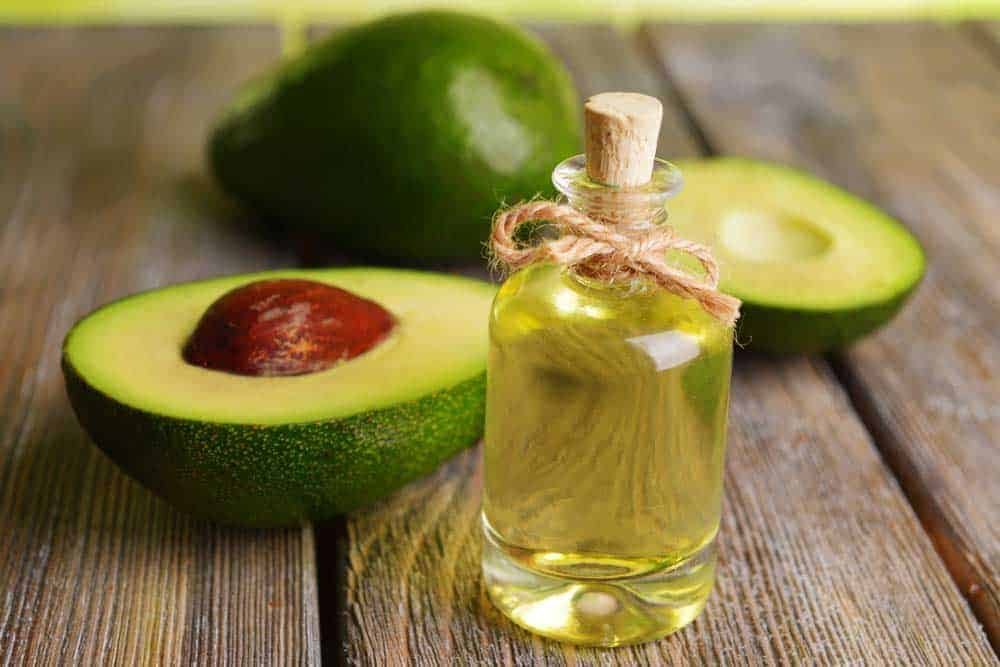Whether you’re running short of peanut oil or simply allergic to anything nutty, this article is for you as I list seven oils that can be a good substitute for peanut oil. When it comes to frying, peanut oil is much desired because of its great taste and high smoking point. Peanut oil is high in unsaturated fats which makes it a good source of antioxidants.
My quest for peanut oil substitutes started when I find it always unavailable at my local supermarket. Today, I’m going to share some great peanut oil alternatives that I've tested myself.
More...
1. Soybean Oil

If you like a neutral tasting oil as a substitute for peanut oil, then soybean oil is a good choice. Soybean oil is a famous form of vegetable oil that’s extracted from soybean seeds. Its color is either a dark yellow or faint green.
Compared to most vegetable oils, soybean oil is known to be healthier because it contains a high load of essential fatty acids like omega 3, stearic acid, and oleic acid. Omega-3 is known to decrease harmful levels of cholesterol and lessen the chance of inflammation.
The smoke point of refined soybean oil is quite similar to peanut oil, which is 450 degrees Fahrenheit. Its high smoke point makes soybean oil ideal for deep frying, sauteing, and baking. Due to its neutral flavor, this oil may be too light for salad dressings.
To substitute soybean oil for peanut oil, use equal amounts as required by a recipe. If a recipe asks for one cup peanut oil, substitute one cup of soybean oil. When using this oil, make sure that you have no soy allergy or else you’ll end up with some serious allergic reactions.
2. Avocado Oil

Avocado oil can be a good alternative for peanut oil because of its high amount of monounsaturated fats and high smoke point. Avocado is rich in oleic acid. Oleic acid is a monounsaturated fat which, according to a study, decreases the risk of heart disease and stroke by lowering bad cholesterol in the body. The lutein found in avocado oil e essential for good eye health.
Compared to other vegetable oil, avocado oil has the highest smoke point at 520 degrees Fahrenheit. This makes avocado oil ideal for all-purpose cooking, especially deep frying. Similar to peanut oil, avocado oil imparts a nutty flavor to your food, so it can also be great for drizzling.
Not only does avocado oil fight free radical damage in your food, but it also resists free radical damage in your body. Compared to olive oil, avocado oil has more vitamin E, and triple the number of carotenoids that help fight cancer. When added to a fresh salad of spinach, carrots, and lettuce, the absorption of carotenoids is increased by 200-400%.
3. Canola Oil

If you want to find a substitute for peanut oil in baking, then you can use canola oil which has a light flavor that doesn’t overpower the baked products. Due to its medium-high smoke point at 400 degrees Fahrenheit, canola oil is also suitable for sauteing. You can also use canola oil for grilling, greasing pans, and salad dressing.
Not only is canola oil versatile in cooking, but it’s also considered healthy. Canola oil has high levels of monounsaturated fat which is akin to olive oil at 63%. Compared to other vegetable oils, it has the lowest amount of saturated fats and higher alpha-linoleic acid (ALA).
Some people might warn you that canola oil is toxic because it contains erucic acid, a substance which is often associated with heart tissue impairments. However, there’s little truth to that because canola is particularly bred to have negligible amounts of erucic acid.
Another health concern about canola oil is the use of chemical solvent hexane in chemical extraction. Although manufacturers have asserted that the chemical solvent has long been eliminated, there's still uncertainty whether the trace residues might cause a serious health risk. To be safe, use cold-pressed canola oil, but this may be pricey.
4. Corn Oil

When it comes to all-purpose cooking, corn oil can be a great substitute for peanut oil. Refined corn oil has a high smoke point of 450 degrees Fahrenheit which suits best for deep frying, baking, and sauteing. In fact, most restaurants use corn oil in frying french fries because of its high smoke point.
If you want your corn oil to be natural and organic, you can use unrefined corn oil which has a medium heat smoke point of 320 degrees Fahrenheit. This makes unrefined corn oil suitable for light sauteing and sauces. As compared to refined corn oil, unrefined oil is dark in color and has a nutty flavor with a hint of corn.
Unlike the refined oil which loses its aroma and taste, the unrefined oil allows you to enjoy the taste of corn on your food. The beauty of corn oil is its availability in any food store. If you’re buying the unrefined variant, make sure that you store it in the fridge because it tends to get cloudy at room temperature.
5. Grapeseed Oil

Grapeseed oil has a medium-high smoke point (392 degrees Fahrenheit) which makes it a great substitute for peanut oil when sauteing and stir-frying. Since it’s virtually flavorless, you can use it in baking without overpowering the taste of your baked goods. You can also use it for salad dressings and marinating meat.
This light green-colored oil is rich in omega 6 that helps burn body fat and increase energy. It’s also has a good amount of vitamin E which effectively boosts your immunity. Although this oil might be low in saturated fats, it has a high content of omega 6 which can increase inflammation. To prevent an overdose of omega 6, aim to balance it out with other forms of healthy fats.
If you buy and use grapeseed oil, make sure that you choose the highest quality as possible. Look for organic, cold-pressed oil because the molecular constitution of its fatty acids is still intact. To extend its shelf life, you can keep the oil in a cool, dark place or in the fridge up to six months.
6. Safflower Oil

Next to avocado oil, refined safflower oil has the second highest smoke point at 510 degrees Fahrenheit. This makes the oil very suitable for high heat cooking, especially for deep frying. Its neutral flavor makes it a suitable choice for other recipes like stir-frying, sauteing, and searing food items.
You can find two variants of safflower in the market today: high-linoleic and high-oleic. If you’re making unheated food recipes, like vinaigrettes, then the high-linoleic safflower oil is recommended. However, if you’re looking for a great substitute for peanut oil in high heat cooking, then the high-oleic safflower oil is more ideal.
To replace peanut oil with safflower oil in traditional stir-fry, thinly coat the pan with the oil. You’ll possibly notice that the flavor of the food becomes more pronounced because the safflower oil has a subtle taste. Because the neutral flavor of safflower oil doesn’t overpower, you can use it in making pancakes, cakes, and cookies.
When buying for safflower oil in the supermarket, look for the refined variant and check the expiration date. To protect your oil from direct heat and sunlight, store the oil in the pantry, not above the fridge nor the stove.
7. Sunflower Oil

For all-around cooking, you can replace peanut oil with refined high-oleic sunflower oil or semi-refined sunflower oil. These two varieties of sunflower oil have a high smoke point of 450 degrees Fahrenheit which suits for deep frying. Because of its subtle flavor, you can also use sunflower oil in baking and even use it for greasing your baking pans.
Sunflower oil is a blend of monounsaturated and polyunsaturated fats. Each teaspoon contains 8.9 grams of omega 6 polyunsaturated fat which is a bit alarming for a healthy diet. If possible, balance your consumption of sunflower oil with other healthy fatty acids from seafood, walnuts, and canola oil. Sunflower oil is rich in vitamin E that's beneficial for good skin and prevention from diseases.
You can keep sunflower oil up to one year with proper storage in your kitchen. To store, just keep the bottle in a cool, dry place and away from direct sunlight and heat.
Learn how to store cooking oils in this video here.
Final Thoughts
Did you enjoy reading the list of a possible substitute for peanut oil? Learning these peanut oil alternatives make you more versatile in the kitchen as you already know what to do when you run out of peanut oil next time. Remember to substitute peanut oil with other oil in 1:1 ratio.
If you have any questions about or suggestions for the article, you can get them heard in the comments section. Please do share this article with your friends and family if you find this informative.

